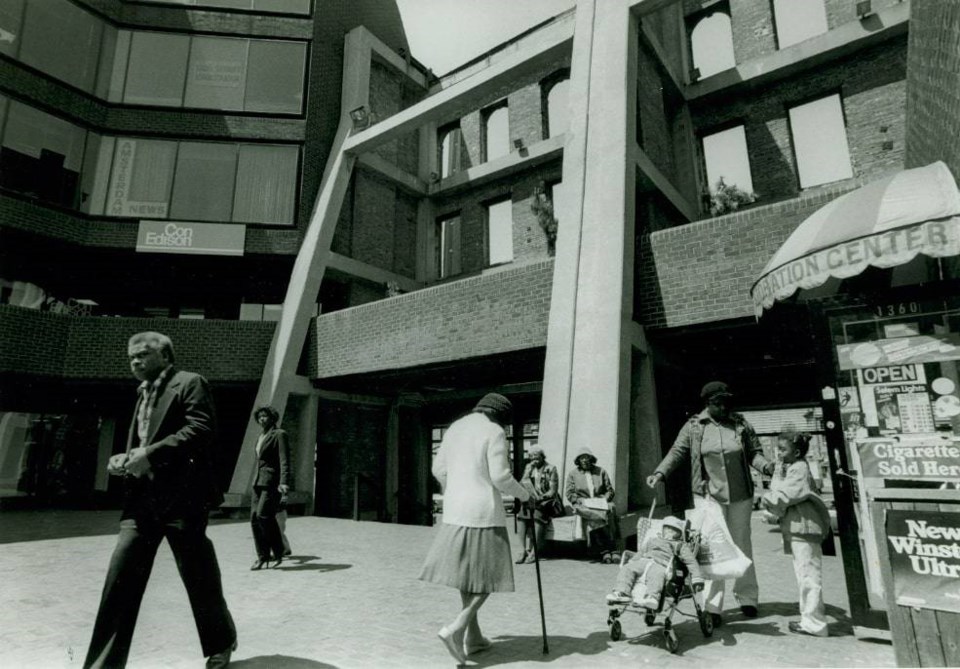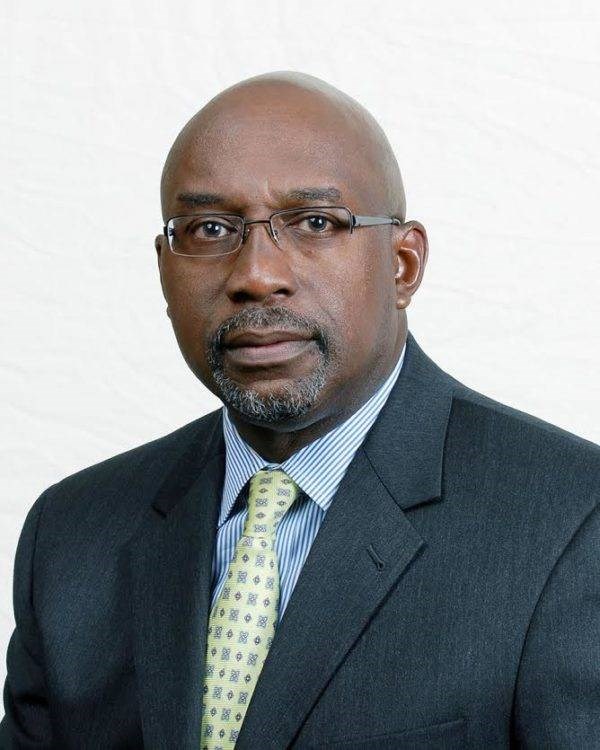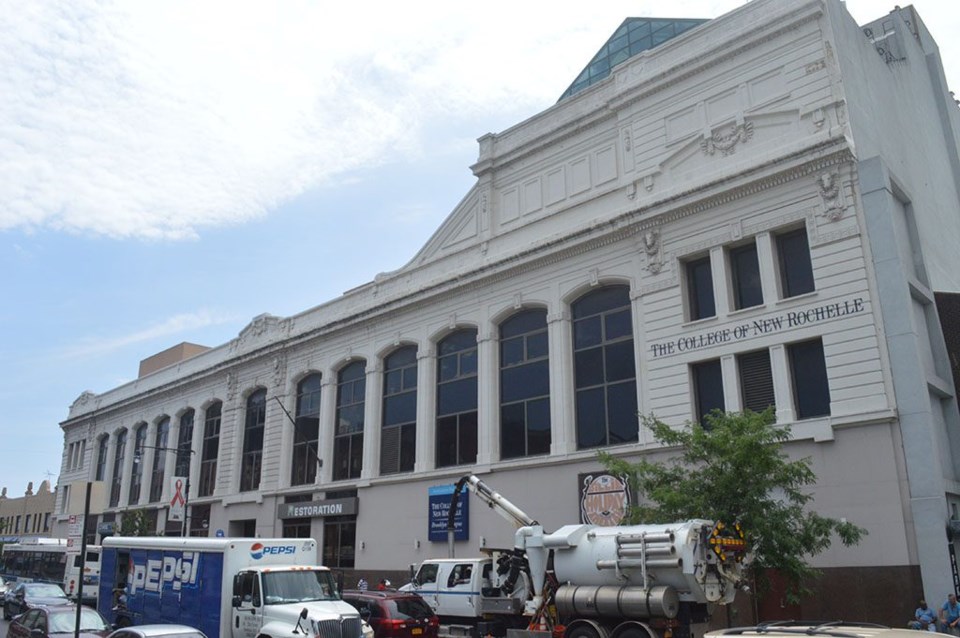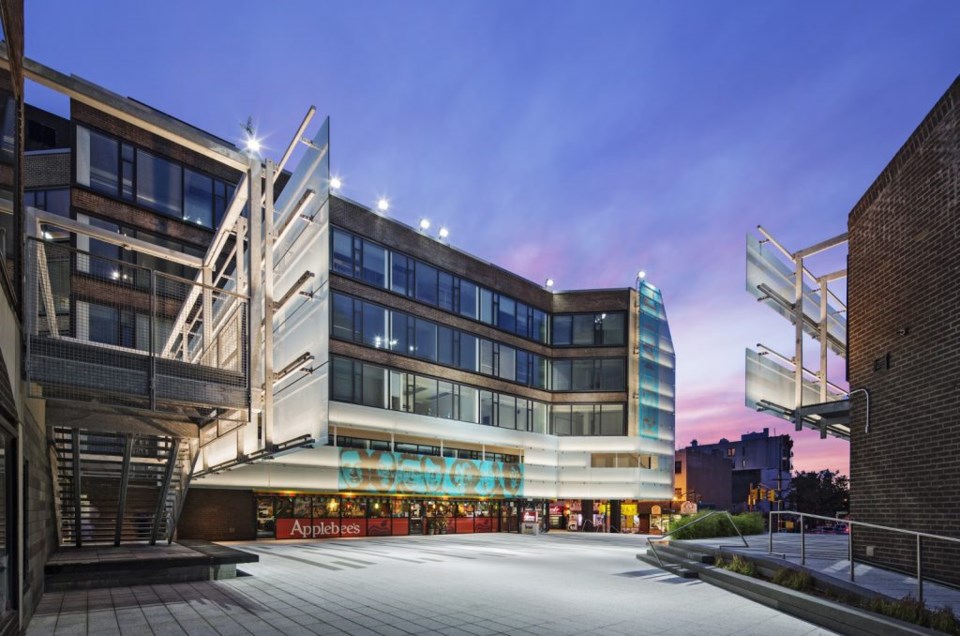Over the next five years, Bedford Stuyvesant's Restoration Plaza will be undergoing a major transformation to better respond to the ongoing changes and new challenges affecting the Central Brooklyn community.
The Bedford Stuyvesant Restoration Corporation, the nonprofit community development organization that owns and operates the plaza, announced a five-year plan to reimagine the physical site, including 400,000 square feet of added office space, as well as the organization's mission to help close the racial wealth gap in Central Brooklyn.
This new vision will be shaped with the community's input and brought to life by renown architect Sir David Adjaye, whose iconic works have included the National Museum of African American History and Culture in Washington D.C. and the Nobel Peace Center in Oslo.
"David Adjaye is drawn to this project because he's focused on building structures that inspire and help communities of color to build value and self-esteem. In many ways, he is uniquely positioned to do this project and help reimagine us."
"We have one of the world's best architects, both from an architectural aesthetics perspective, but also from an affinity perspective," said Colvin Grannum, president of Bedford Stuyvesant Restoration Corporation. "David Adjaye is drawn to this project because he's focused on building structures that inspire and help communities of color to build value and self-esteem. In many ways, he is uniquely positioned to do this project and help reimagine us."
Restoration was founded in 1967 as the nation's first community development corporation by African American and Caribbean residents with the support of US Senators Robert F. Kennedy and Jacob Javits as well as then-NYC Mayor John Lindsay.

For more than five decades, the organization has provided a home to a higher education institution, financial and retails establishments as well as federal, state and city offices. The corporation's services have helped tens of thousands of residents in finding employment, starting businesses, purchasing homes, building savings and reducing debt, among other things. With the inception of The Billie Holiday Theatre in 1972, Restoration also became a community anchor for arts and culture.
"We want the plaza to be a symbol for equity to help the community create and preserve assets, wealth and net worth."
The organization has been instrumental in helping to revitalize Bed-Stuy and Central Brooklyn. But the community still faces significant challenges, stemming from historic disinvestment and racially discriminatory economic policies and practices, like redlining, predatory lending, deed theft and other forms of discrimination.
"We're very much focused on trying to address those issues. Today's homeownership rate of African Americans is lower than when Restoration Plaza was built, which is hard to believe," said Grannum. "What we're trying to do is press for systemic change. We want the plaza to be a symbol for equity to help the community create and preserve assets, wealth and net worth. That cuts across all areas to give access to not just to jobs but also to arts and culture, community programs and a wide range of things."
Which is why restoration went through an extensive process to develop a plan to "relentlessly pursue strategies to close gaps in family and community wealth, so that all households and families in central Brooklyn are prosperous and healthy," he added.

"We have a very fast growing, strong economy. We've seen a lot of new businesses and a large amount of wealth come to Brooklyn," said Grannum. "We see rising real estate prices, and we see merchants, as well as local arts and cultural groups who can no longer afford to be here. But there's a lot of investment, and the land on which Restoration Plaza is built has increased in value. We want to leverage these new forces to provide better facilities and services to the community."
Restoration will reshape its focus on attracting resources, tenants, service and education providers that will help train local residents for middle-income jobs in technology, health care or other related fields that are growing.
"We want to attract employers who are committed to creating an equitable economy by including central Brooklyn residents, particularly African Americans, Latinos and Caribbean Americans who are not included in the workforces, and help them earn better wages," Grannum explained.
"We want to attract employers who are committed to creating an equitable economy by including central Brooklyn residents, particularly African Americans, Latinos and Caribbean Americans who are not included in the workforces."
The organization's new strategy is based on four pillars: the Center for Personal Financial Health to help local residents and families increase their savings and net worth with financial, homeownership and career services; the Center for Community Asset Building to ensure that new investments in local infrastructure, housing, business, arts and culture are fashioned to include, rather than displace, low- and moderate-income residents; the Center for Social Entrepreneurship and Enterprise to reimagine Restoration Plaza as a hub for entrepreneurship, middle-income jobs, skills development and training; and RestorationART with The Billie Holiday Theatre as its cultural centerpiece.
"It is very important to us, is to create first-class facilities that promote and preserve the arts and culture of people of African descent," said Grannum.

In the weeks and months ahead, the organization will hold several focus group meetings with local residents, merchants and community stakeholders to collect their input that will further shape the vision of the reimagined Restoration Plaza. The way in which Restoration's new home functions will be decided in lock-step with the community, Grannum emphasized. Additionally, the organization launched an online portal that allows the local community to follow along and offer comments throughout the planning process.
"It is very important to us, is to create first-class facilities that promote and preserve the arts and culture of people of African descent."
"We have been asking the community about their priorities regardings uses they want to see preserved," said Grannum. "We've also been asking questions about possible amenities they would like to see in our public space such as furnishings or art. But most of our questions really revolve around how we can amplify Restoration Plaza as a vehicle for closing the racial wealth gap as well as preserve the arts and culture."
The planning process for Restoration Plaza's visual reimagining is in the very early stages, but more detailed plans and first renderings, Grannum hopes, may be revealed early fall.
If you want to stay up-to-date with the planning process and share your input, visit Restoration's online portal here.




